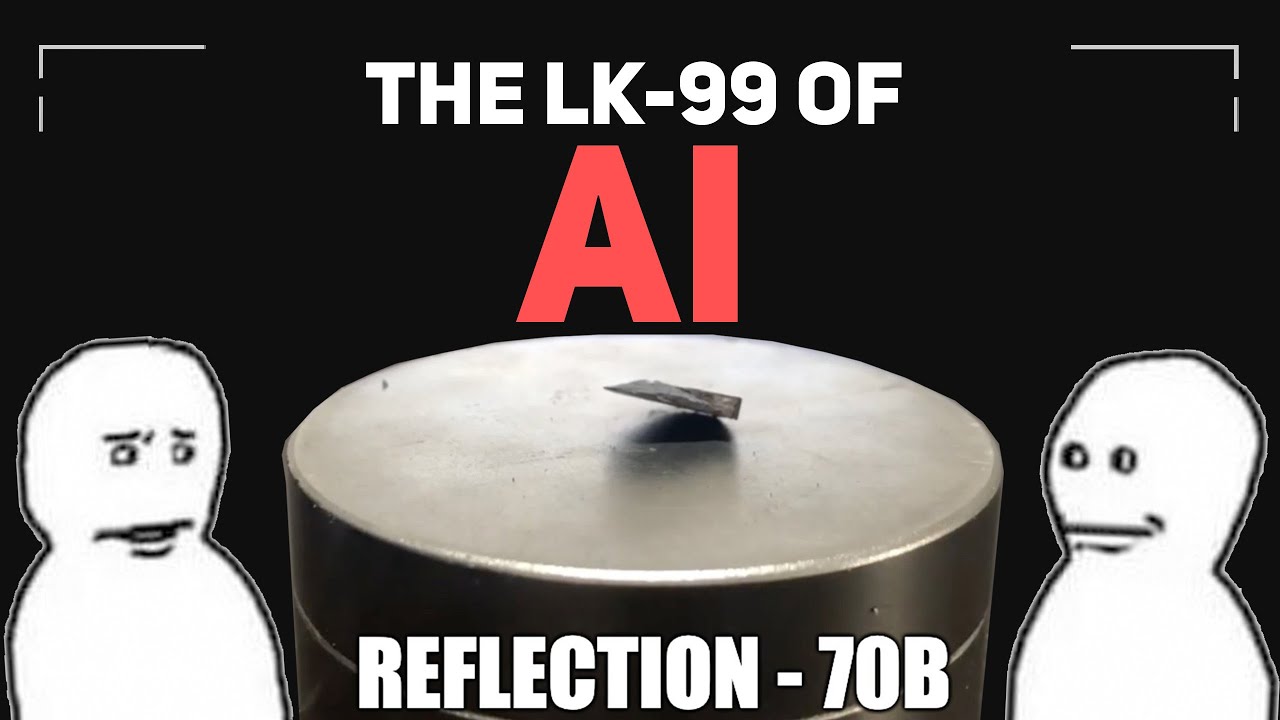The video explores the controversy surrounding the open-source AI model Reflection-70B, which initially garnered excitement for outperforming larger models but later faced skepticism due to discrepancies in performance and claims of its development. As users reported poor results and similarities to existing models, the situation raised questions about transparency and accountability in the AI community, drawing parallels to previous controversies like LK-99.
The video discusses the controversy surrounding the open-source AI model Reflection-70B, which has been compared to the LK-99 situation in the realm of AI. The model, announced by Matt Schumer, reportedly outperformed larger models like Llama 3.1 and Clot 3.5 on various benchmarks, raising excitement in the AI community. Reflection-70B employs a technique called reflection tuning, which allows the model to self-verify its results during generation. This innovation, along with the model’s open-source nature, has led to significant interest and engagement on social media.
However, as users began to test the model, discrepancies arose. Many found that the model did not perform as expected on benchmarks, leading to suspicions about the integrity of the weights provided. Schumer claimed that issues with the model’s performance were due to upload limits and rushed uploads, but users remained skeptical. Further investigations revealed that the model might not be what it was claimed to be, with some suggesting it was a variant of Llama 3.0 rather than Llama 3.1, raising questions about the accuracy of the claims made by Schumer.
As the situation unfolded, Schumer attempted to address the performance issues by re-uploading the model multiple times, but users continued to report poor results. A Reddit user discovered that the weights for Reflection-70B and Llama 3.1 were nearly identical, suggesting that the model might not have undergone the claimed fine-tuning. This led to further speculation about whether Schumer had actually trained the model himself or if it was the work of others, particularly given the complexity and expertise required to achieve such performance.
The video also highlights the role of third-party API services that were provided access to Reflection-70B. These services reported discrepancies between the performance of the model on their platforms and the internal benchmarks shared by Schumer. As the situation escalated, the CTO of Hyperbolic, a company involved in hosting the model, expressed frustration over the lack of communication and the confusion surrounding the model’s performance. This culminated in the decision to withdraw support for the model due to its underwhelming results.
In conclusion, the video emphasizes the growing skepticism surrounding Reflection-70B and the credibility of its claims. The situation has drawn parallels to previous controversies in the AI field, highlighting the challenges of transparency and accountability in open-source projects. As the community awaits further developments, the video encourages viewers to remain critical and informed about the ongoing situation, while also promoting the creator’s other content related to AI research and news.
What was the LK-99 situation?
The LK-99 situation refers to the controversy surrounding a material known as LK-99, which was identified as a copper-doped lead-oxyapatite. Researchers from Korea University claimed that it could function as a room-temperature superconductor at temperatures up to 400 K (127 °C; 260 °F) at ambient pressure. Following this announcement in July 2023, many researchers attempted to replicate the findings, as the synthesis process for LK-99 was relatively straightforward.
However, by mid-August 2023, the scientific consensus was that LK-99 did not exhibit superconductivity at room temperature and was more likely an insulator in its pure form. As of February 12, 2024, no replication attempts had successfully gone through the peer review process, though some were reviewed by materials science labs. Multiple studies suggested that observed phenomena, which initially indicated superconductivity, could instead be attributed to impurities, particularly copper sulfide, leading to erroneous interpretations.
The situation became notable because it highlighted issues related to reproducibility and verification in scientific research, similar to the ongoing discussions in the AI community regarding the integrity of claims related to new models and technologies. More information about LK-99 can be found in the full article here: LK-99 Wikipedia.
